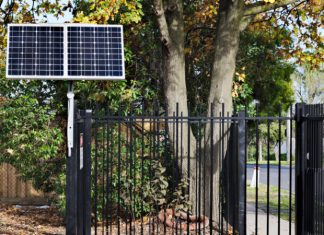The transition to renewable energy sources is becoming increasingly important as the effects of climate change become more pronounced. Homeowners are in a unique position to contribute to this shift, benefiting both the environment and their finances. Renewable energy sources like sunlight, wind, geothermal heat, and biomass offer sustainable alternatives to fossil fuels, which are finite and environmentally damaging.
This guide aims to provide homeowners with a comprehensive understanding of how to integrate renewable energy into their homes, exploring the benefits and challenges associated with each option.
Understanding Renewable Energy
Renewable energy derives from natural sources that replenish themselves over time, offering a clean and sustainable alternative to fossil fuels. Homeowners have access to several practical renewable energy options, each with its unique advantages and challenges. These include solar energy, which harnesses sunlight; wind energy, which captures wind power; geothermal energy, which utilizes the Earth’s heat; and biomass energy, which uses organic materials. Transitioning to renewable energy is not only essential for addressing environmental issues but also provides economic benefits through reduced energy bills and various incentives.
Solar Energy: Harnessing the Power of the Sun
Solar energy is one of the most popular renewable energy options for homeowners. It uses photovoltaic panels to convert sunlight directly into electricity and solar thermal systems to capture and use the sun’s heat for water and space heating. The main attraction of solar energy is its potential for substantial cost savings. After the initial investment in solar panels and the process of home solar panel installation, homeowners can significantly reduce or even eliminate their electricity bills. Additionally, numerous federal, state, and local incentives are available to help offset the upfront installation costs. Solar panels require minimal maintenance, typically needing only periodic cleaning and inspections to ensure they function optimally. Advances in solar technology have made these systems more efficient, even in areas with less abundant sunlight, making solar energy a viable option for many homeowners.
Wind Energy: Capturing Wind for Electricity
Wind energy is another promising renewable energy option for homeowners, especially those in rural or coastal areas with consistent wind patterns. Small wind turbines can be installed on a property to generate electricity. Wind energy is clean, abundant, and inexhaustible, providing a reliable power source that reduces dependence on the grid and lowers electricity bills. However, the initial installation cost of wind turbines can be high, and their effectiveness depends heavily on the location and local wind conditions. Aesthetic and noise considerations might also be a concern, although technological advancements are continuously addressing these issues.
Geothermal Energy: Utilizing the Earth’s Heat
Geothermal energy provides a sustainable and efficient way to heat and cool homes by using the Earth’s consistent underground temperatures. A geothermal heat pump system can offer efficient heating in the winter and cooling in the summer. These systems are environmentally friendly and reduce greenhouse gas emissions compared to conventional heating and cooling systems. While the installation cost of geothermal systems can be higher than traditional HVAC systems, the long-term savings on energy bills can be substantial. Geothermal systems have the added advantage of being unobtrusive, with most equipment installed underground or inside the home requiring minimal outdoor space. Their reliability and efficiency make geothermal systems an attractive option for homeowners seeking a consistent and sustainable energy source.
Biomass Energy: Renewable Heating Solutions
Biomass energy uses organic materials such as wood, agricultural residues, and other plant-based materials to generate heat and electricity. Homeowners can install biomass boilers or stoves that burn these materials for heating. Biomass energy is renewable and can help reduce reliance on fossil fuels, often sourcing materials locally and supporting local economies. However, the sustainability of the biomass source is crucial, and it’s important to ensure that the materials are harvested and processed responsibly. Regular maintenance and proper storage of biomass materials are essential to ensure efficient and clean combustion.
Integrating Renewable Energy Systems
Integrating renewable energy into a home involves selecting the appropriate technology and ensuring it works harmoniously with the existing infrastructure. Home energy management systems can optimize the use of renewable energy, ensuring that the energy produced is used efficiently and effectively. Smart meters and battery storage systems enhance the benefits of renewable energy by storing excess energy produced during peak times and releasing it when demand is high. This maximizes the use of renewable energy and provides a backup power source in case of grid outages. Careful planning and integration of these technologies can create a more resilient and sustainable energy system for homeowners.
Conclusion
Adopting renewable energy at home is a proactive step towards a more sustainable future. It involves careful consideration of various factors, including initial costs, location, and the specific energy needs of your household. Leveraging available incentives and advancements in technology, the transition to renewable energy can be both financially and environmentally rewarding. As more homeowners embrace these solutions, the collective impact on reducing carbon emissions and promoting energy independence becomes increasingly significant.














